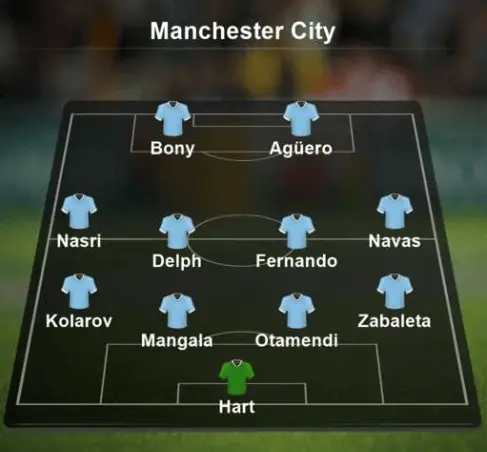A relatively new one to the lexicon of the footballing world, the false winger is often associated with players that drift inside to make their mark on the game instead of staying wide and attacking the fullback. False wingers are often attacking midfielders, or number tens, that the manager looks to shoehorn into the team for their creative ability. One prominent example of this is Manchester United’s use of their diminutive Spaniard, Juan Mata. Louis Van Gaal has asked the player, who is traditionally considered to play behind the striker, in a wide berth.
Advantages:
False wingers are required to vacate their starting position out wide and roam into dangerous areas in order to create chances. This will often make them very difficult to defend against as fullbacks are unsure whether to pass their man on or track their runs. As a result, the freedom associated with false wingers can mean opposing fullbacks sometimes find themselves stuck in a stick or twist situation where they are unsure who they are actually marking.
In asking a player to fulfil this role, managers are able to shoehorn players that are typically considered to be number tens into the team without disrupting the formation. For example, Manchester City’s use of Samir Nasri against West Bromwich Albion (09/04/16). The Frenchman was played wide left in a traditional 4-4-2 formation as Manuel Pelligrini sought to include Wilfred Bony up top alongside Aguero. Instead of changing the formation to include a player in the traditional number ten role, City included a player of that ilk out wide, allowing him the freedom to drift and influence proceedings.

Disadvantages:
In comparison to ‘traditional wingers’ who look to stay wide, receive the ball, and get to the by-line, false wingers seek to vacate their starting position on the wing and make use of the ball inside. This can however limit a team’s ability to stretch the pitch. By looking to drift inside in order to effect play and get on the ball, the source of team’s width has to be provided by entirely attacking fullbacks. Whilst this can be done to great affect, the pressure placed upon the fullbacks increases as they are required to dictate proceedings on that side of the pitch.
The central reservations of the pitch can also become congested when asking a player to play with this kind of freedom as they will often look to take up the same kind of positions as that of a traditional number ten, an attacking midfielder, or a striker looking to drop deep to find the ball. This can stifle attacking threat as there isn’t as great an option out wide, and less ability to stretch and move the opposition.
Players playing in these may also struggle with their defensive contribution as they may typically be played in area where the way they defend is different. By this I mean the difference between defending when playing right wing in comparison to attacking midfield. These creative players will be asked to track back, match the run of the oppositions fullback, and aid his defence in stemming the flow of any potential threat down his side of the pitch. This can become difficult when you consider they are also also asked to drift infield to influence the game.
Conclusion:
The use of false wingers is has arguably become more commonplace in modern football with teams usually having at least 2 or 3 attacking midfielders in their squads. This inverted idea of the traditional winger is a way of shoehorning these players into starting line-ups without sacrificing the teams starting shape.









Recent Comments